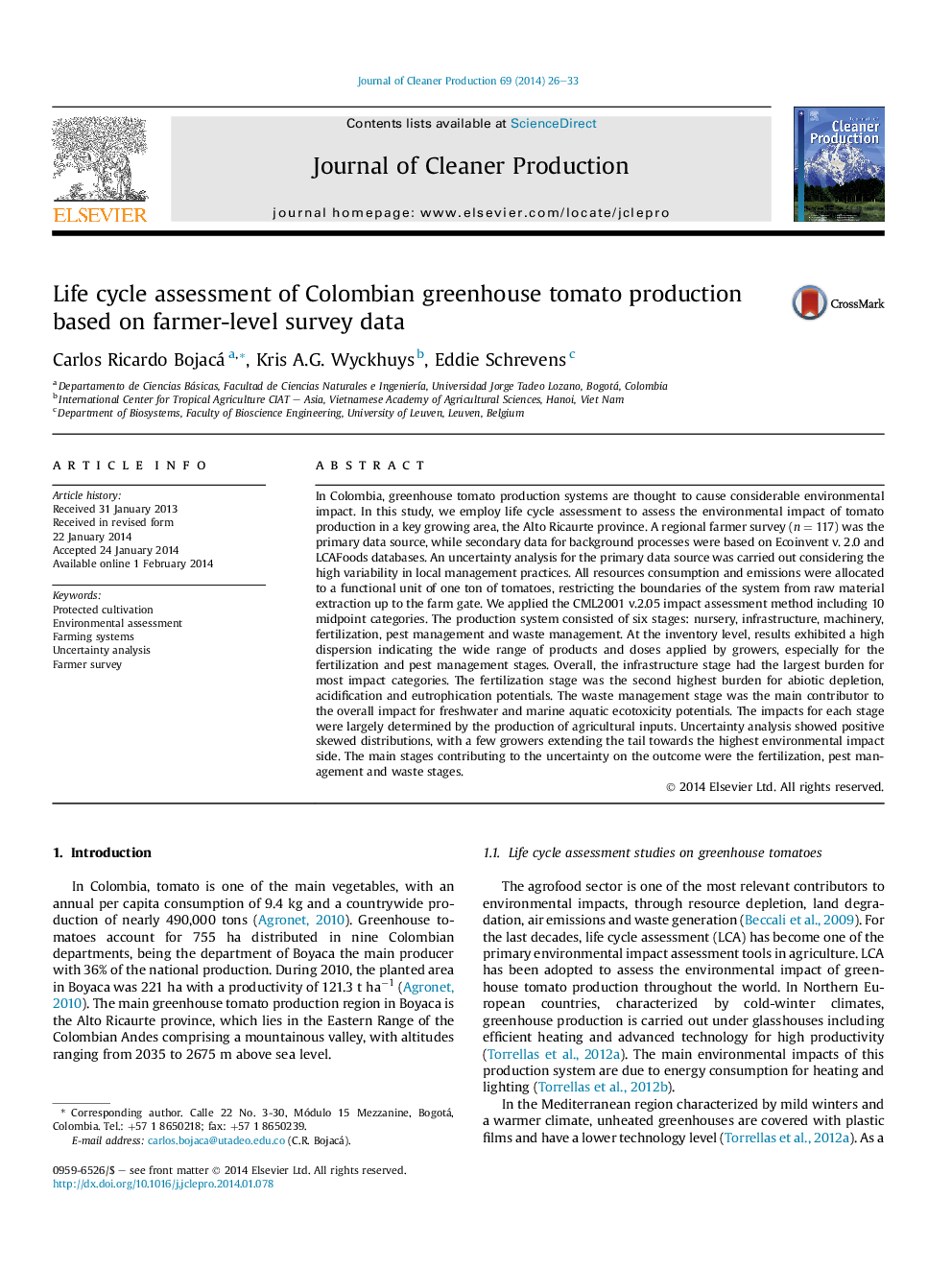| کد مقاله | کد نشریه | سال انتشار | مقاله انگلیسی | نسخه تمام متن |
|---|---|---|---|---|
| 1745046 | 1522177 | 2014 | 8 صفحه PDF | دانلود رایگان |
• We analyzed the cradle-to-gate environmental impact of Colombian greenhouse tomato production.
• The primary data source were 117 farmer-level interviews.
• The infrastructure stage was the main contributor to the environmental impact.
• We carried out an uncertainty analysis on the variability of management practices.
• Fertilization, pest and waste management stages were the main uncertainty sources.
In Colombia, greenhouse tomato production systems are thought to cause considerable environmental impact. In this study, we employ life cycle assessment to assess the environmental impact of tomato production in a key growing area, the Alto Ricaurte province. A regional farmer survey (n = 117) was the primary data source, while secondary data for background processes were based on Ecoinvent v. 2.0 and LCAFoods databases. An uncertainty analysis for the primary data source was carried out considering the high variability in local management practices. All resources consumption and emissions were allocated to a functional unit of one ton of tomatoes, restricting the boundaries of the system from raw material extraction up to the farm gate. We applied the CML2001 v.2.05 impact assessment method including 10 midpoint categories. The production system consisted of six stages: nursery, infrastructure, machinery, fertilization, pest management and waste management. At the inventory level, results exhibited a high dispersion indicating the wide range of products and doses applied by growers, especially for the fertilization and pest management stages. Overall, the infrastructure stage had the largest burden for most impact categories. The fertilization stage was the second highest burden for abiotic depletion, acidification and eutrophication potentials. The waste management stage was the main contributor to the overall impact for freshwater and marine aquatic ecotoxicity potentials. The impacts for each stage were largely determined by the production of agricultural inputs. Uncertainty analysis showed positive skewed distributions, with a few growers extending the tail towards the highest environmental impact side. The main stages contributing to the uncertainty on the outcome were the fertilization, pest management and waste stages.
Journal: Journal of Cleaner Production - Volume 69, 15 April 2014, Pages 26–33
